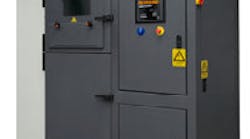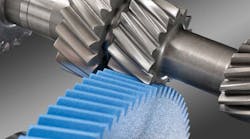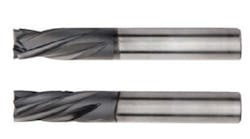American Machinist launched its third annual Benchmark Survey of American Machine Shops in February to further develop the tools that U.S. machine shops need to gauge their competitive positions, and to help them to make plans to improve and empower them to control their future.
These tools are designed to help our shop owners and managers to systematically improve their operations, and to become more competitive.
We have identified several factors in the survey — American Machinist’s Metalworking Benchmarks — as best practices, and we used responses to questions about them to determine a benchmark set of shops – those that consistently lead the pack. We suggest that the results reported from those leaders are the numbers that shops should target, and performance measurements that shops should strive to reach.
Here’s why:
The benchmark group of shops expect their revenues to increase more than 15 percent in 2008 over 2007. Meanwhile, the other shops expect their revenues to decrease by 17 percent this year.
The benchmark shops report their return on invested capital is an average of 37 percent, up from 31.2 percent three years ago. The other shops expect a return on invested capital of 26.4 percent this year, down from 30.5 percent three years ago.
So, in these two vital areas – sales and profit – the industry leaders are performance is demonstrably better than all of the other shops.
We are presenting to you below the 12 business factors that those leaders excel in, and we suggest that, if you tune up your shop to try to match the results below, you could begin to report similar outcomes.
The information we have received in the survey is elaborate and is a snapshot of information that shows the current state of the U.S. machine tool industry.
The shops whose owners and managers returned our survey represent job shops, contract shops and units of large manufacturers (in-house operations), and the survey results demonstrate consistency that reinforces the conclusions drawn from it are authoritative.
Shops have participated from all parts of the United States, with – as we expected – a slightly heavier concentration in the Midwest. However, shops from the Pacific Northwest to the Southeast, and from New England to southern California included themselves in this survey.
1: Annual labor turnover rate for 2007.
Annual labor turnover is an indication that a business is – or is not – keeping its skilled employees. Businesses that retain key employees and trained employees tend to do better than those that do not.
The shops responding to our survey reported a median labor turnover rate of 5 percent for 2007, and this statistic was the same across each group of shops that responded. The average annual labor turnover rate across all U.S. manufacturing as reported by Industry Week magazine is 6 percent.
2. Job-related injuries and illnesses that resulted in lost work days per employee in 2007.
Job-related injuries decrease productivity and result in lower profitability.
All the shops that responded to the survey reported an average of 2.6 job-related injuries or illnesses that resulted in lost workdays in 2007. Curiously, the benchmark shops reported a slightly higher number – 2.7 injuries or illnesses – than all the other shops.
3. How have per-unit manufacturing costs, excluding purchased material, changed in the past year?
Lower manufacturing costs directly increase profit, and should be a constant goal, especially with customers who demand continuous price reductions.
For all of the shops, 22.1 percent said their manufacturing costs stayed the same in the past year, while 18.2 percent said they decreased by 1 percent to 10 percent, and 7.1 percent said their manufacturing costs decreased by more than 11 percent. Meanwhile, 29.9 percent said their costs increased by 1 percent to 10 percent, and 16.9 percent said their costs increased by more than 11 percent.
The benchmark group of shops reported the following: 13.6 percent said their manufacturing costs stayed the same, while 22.7 percent said their costs decreased 1 percent to 10 percent and 27.3 percent said their costs decreased by more than 11 percent. In the benchmark group, 13.6 percent said their costs increased by 1 percent to 10 percent and 6.8 percent said their costs increased by more than 11 percent.
4. Reduction of machining cycle time over the past three years.
Machining cycle time is the time measured from placing a workpiece for a typical product onto a machine until it is removed. Reducing machining cycle time increases productivity and profit.
Combined, the shops that reported indicated that they reduced their machining cycle times by 25 percent over the past three years, to a median time of 0.4 hours from a median time of 0.5 hours. The benchmark shops reported a greater reduction, a 50 percent cut in machining cycle times, from 0.8 hours to 0.4 hours. Shops outside the benchmark group no reduction in machining cycle time over the last three years.
5. Set-up time.
Set-up time is the time it takes to prepare a job for machining, and includes fixturing the workpiece for a typical product and setting the tooling for the job.
All the shops reported no reduction in set up time, based on the median numbers, while, the benchmark shops reported a 50 percent reduction in set-up time, to 2.0 hours from 4.0 hours three years ago.
6. On-time completion rate.
This measures the percentage of goods that are delivered on time and to customer orders. Keeping on schedule and keeping customers happy are good business practices that lead to improved profit.
All of the shops in the survey reported significant gains in on-time completion rates, moving to a 91.0 percent rate in 2007 from an 85.0 percent rate three years ago. In this category, the benchmark group of shops improved to a 95.0 percent rate from an 86 percent rate three years ago, while shops outside of the benchmark group went to an 90.0 percent rate from a rate of 85.0 percent three years ago. This category stood out as setting the benchmark group of shops ahead of the others.
7. Finished-product first-pass quality yield.
This measures the number of products that require only one final inspection, and do not have to be returned to manufacturing for rework. Companies with a high finished-product first-pass quality yield are more profitable because they spend less on rework.
This is another category in which all shops reported gains from three years ago. Combined, the shops in the survey said 98 percent of their products now pass final inspection the first time, compared with 95 percent three years ago. The benchmark shops and all other shops reported similar numbers.
8. Scrap and rework costs.
This measures the loss of profit that comes from poor manufacturing, and is reported as a percentage. A low percentage is good.
All of the shops combined reported significant reductions in the costs for scrap and rework, to an average of 3 percent of sales in the most recent year from an average of 6.1 percent three years ago. The benchmark shops reported costs of 2.2 percent for the most recent year, down from 7.7 percent three years ago, while shops outside of the benchmark group reported that scrap and rework cost them an average of 3.3 percent of sales compared with 8 percent of sales three years ago.
9. Shop revenue per man-hour.
This measures revenue based as a function of the number of hours that employees are paid to work. The higher this number is, the greater the profit that a shop can expect.
All shops combined reported median revenue per man-hour of $60, which is the standard charge that many shops quote as their per-hour fee for work. The benchmark shops reported median revenue per man-hour of $70, and the shops outside of the benchmark group reported $57.69. This increased revenue per man hour was another category that set the benchmark group of shops aside from the other shops in the survey.
10. Total machine uptime.
This measures hours of production as a percentage of the hours during which the plant operates.
In every category, shops reported significant improvements in average machine uptime over three years ago. For 2007, all shops combined reported an average machine uptime of 73.3 percent. Benchmark shops reported an average machine uptime of 83.5 percent, and shops outside of the benchmark group reported an average machine uptime of 67.2 percent.
11. Machine availability.
This measures the amount of time that machine is available when it is supposed to be, and is an indication that a shop’s tools are ready and able to work when they are needed.
Again, shops reported significant improvements in average machine availability times compared to three years ago. For 2007, all shops combined reported an average machine availability of 78.3 percent. Benchmark shops reported an average machine availability of 78 percent, while shops outside of the benchmark group reported average machine availability of 78.5 percent. In this category, the benchmark shops reported results that were slightly below other shops in the survey.
12. Spindle utilization time.
This is the time that a machine is cutting metal as a percentage of the time that a machine is available for use.
All shops together reported 74.5 percent spindle utilization rate. Meanwhile, the benchmark shops reported an 80 percent spindle utilization rate, while shops outside of the benchmark group reported a 60 percent spindle utilization rate.
Latest from Uncategorized
Latest from Uncategorized
Uncategorized
Newsletter Confirmation Page
Oct. 29, 2012
Uncategorized
Gearmaking with Precision, and Speed
July 26, 2012
Uncategorized
Composites, With No Limits
July 25, 2012



